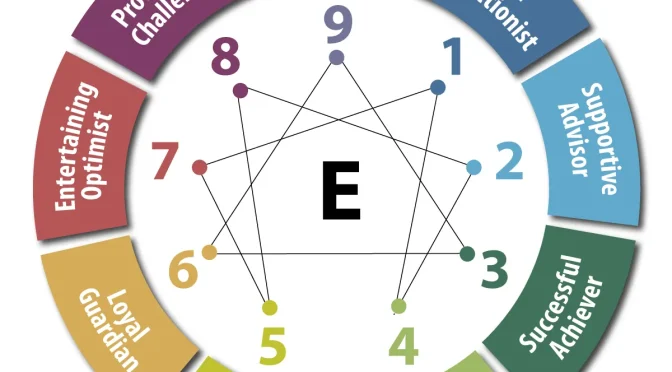Decoding the Enneagram: A Map to Self-Discovery. Embarking on a journey of self-discovery can be both intriguing and transformative, and the Enneagram is a valuable tool that facilitates this exploration. While the system may initially seem complex, it is rooted in simplicity and offers profound insights into our basic personality types. In this article, we will break down the fundamental concepts of the Enneagram, guiding you through its structure, the nine basic personality types, and how it can serve as a roadmap to understanding yourself and others.
We should call out from the outset that not all psychologists agree that the Enneagram has psychological merit. While interesting to consider, the Enneagram is not based on established psychological science and, similar to astrology, should merely be used as a tool for self-reflection and not determination.
Understanding the Enneagram’s Structure
The Enneagram’s structure is a circle with nine equidistant points, each representing one of the nine basic personality types. These types are interconnected by inner lines, creating a pattern that reveals the relationships between them. Notably, points Three, Six, and Nine form an equilateral triangle, while the remaining six points create an irregular hexagram.
Your Basic Personality Type
At the core of the Enneagram is the concept of basic personality types. From a broader perspective, there are nine distinct types, and each person resonates most strongly with one of them. This dominant type is shaped by inborn temperament and prenatal factors. It’s crucial to note that individuals do not switch from one basic personality type to another, and the Enneagram uses numbers to avoid value judgments, promoting an unbiased understanding of each type.
Identifying Your Basic Personality Type
The journey of self-discovery often begins with identifying your basic personality type. Utilizing tools like the Riso-Hudson Enneagram Type Indicator (RHETI® version 2.5) can provide valuable insights. The Enneagram offers a range of descriptors for each type, allowing individuals to recognize their primary traits. For example, Type One is principled and perfectionistic, while Type Seven is spontaneous and acquisitive.
The Instinctive Centers
The Enneagram organizes the nine personality types into three centers: Instinctive, Feeling, and Thinking. Each center shares common assets and liabilities related to its dominant emotion. The Instinctive Center deals with Anger or Rage, the Feeling Center with Shame, and the Thinking Center with Fear. Understanding the emotional themes of each center enhances our comprehension of how individuals cope with their emotions.
The Nine Enneagram Type Descriptions
Let’s delve into the specifics of each Enneagram type to gain a deeper understanding:
THE REFORMER (Type One)
- The Rational, Idealistic Type: Principled, Purposeful, Self-Controlled, and Perfectionistic.
THE HELPER (Type Two)
- The Caring, Interpersonal Type: Demonstrative, Generous, People-Pleasing, and Possessive.
THE ACHIEVER (Type Three)
- The Success-Oriented, Pragmatic Type: Adaptive, Excelling, Driven, and Image-Conscious.
THE INDIVIDUALIST (Type Four)
- The Sensitive, Withdrawn Type: Expressive, Dramatic, Self-Absorbed, and Temperamental.
THE INVESTIGATOR (Type Five)
- The Intense, Cerebral Type: Perceptive, Innovative, Secretive, and Isolated.
THE LOYALIST (Type Six)
- The Committed, Security-Oriented Type: Engaging, Responsible, Anxious, and Suspicious.
THE ENTHUSIAST (Type Seven)
- The Busy, Fun-Loving Type: Spontaneous, Versatile, Distractible, and Scattered.
THE CHALLENGER (Type Eight)
- The Powerful, Dominating Type: Self-Confident, Decisive, Willful, and Confrontational.
THE PEACEMAKER (Type Nine)
- The Easygoing, Self-Effacing Type: Receptive, Reassuring, Agreeable, and Complacent.
Uses of the Enneagram
The Enneagram works by sorting people into these nine different types, offering insight not only into an individual’s personality but also providing valuable information on how to better relate to others.
Possible Applications of the Enneagram
- Personal growth and development
- Interpersonal communication, team building, and leadership development
- Creating successful relationships at work and in other life areas
- While the Enneagram theory needs further research to validate its use, it has gained popularity as a tool for building better relationships.
- Businesses utilise the test within the field of industrial-organizational psychology to improve employee motivation and productivity.
Impact of the Enneagram
Critics note that the system is rooted more in a semi-mystical ancient philosophy than in scientifically valid research. However, some studies suggest that participants in Enneagram training programs showed improvements in ego development and personal growth. Further research is needed to explore the Enneagram’s applicability and usefulness.
Sample Enneagram Test Questions
Some Enneagram tests involve answering questions based on a sliding scale, while others only allow you to choose from two answers. Examples include questions about importance of others’ opinions, striving for perfection, and emotional depth.
Tips for Using Enneagram Test Results
It’s crucial to remember that personality is complex, and a simple online test cannot capture everything about your personality. While tests can be fun and interesting, they should not be taken too seriously. The Enneagram can serve as a starting point for gaining greater personal insight and self-awareness.
Potential Pitfalls of the Enneagram
There are pitfalls to consider, including criticisms of being pseudoscientific and descriptions being too general. It is essential to recognise that the Enneagram does not suggest any type is better than another; traits are subjective and culture-dependent.


